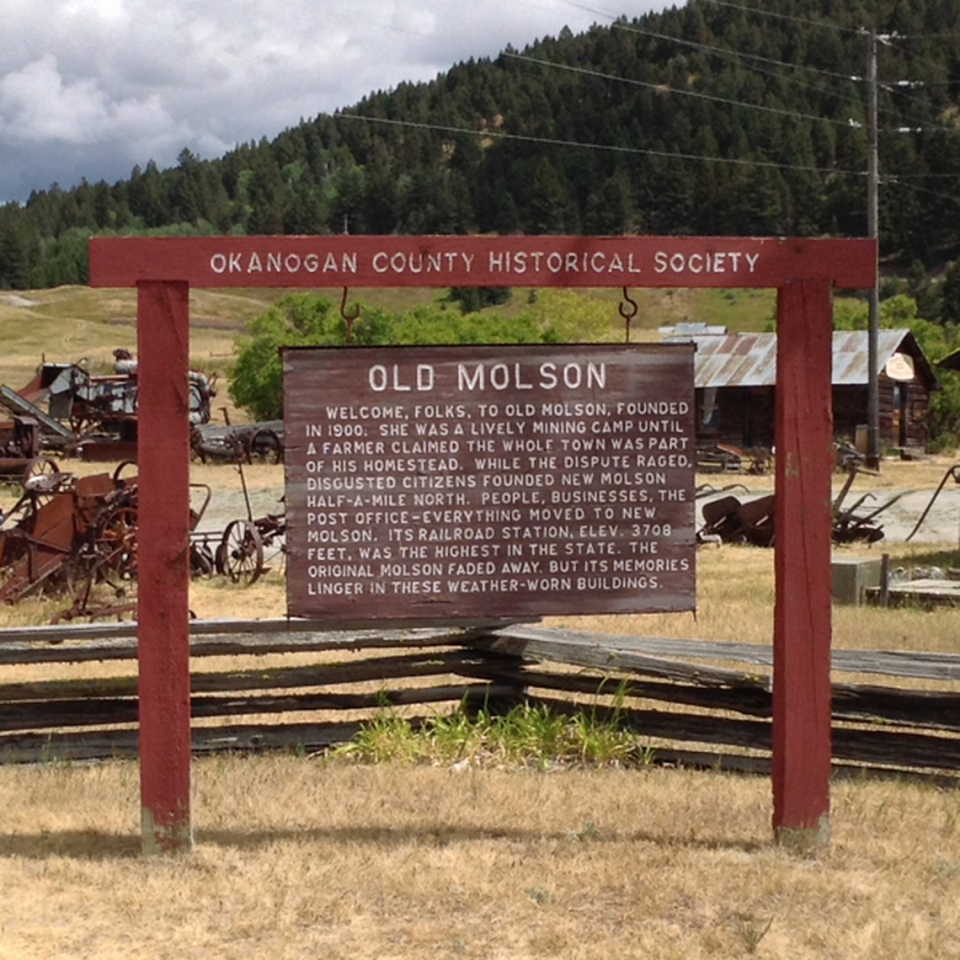Boom town or boo town? You decide at these WA ghost towns east of the Cascade Mountains
Gold was discovered in the soon-to-become state of California in 1848, leading to a surge of miners moving west in hope of similar luck. While not as popular as some other nearby states, Washington state had a gold rush-related timber boom and saw miners in search of riches around the 1890s. It wouldn’t take long for small timber and mining towns to pop up across the state.
Railroads also brought more small areas of dwelling to the Evergreen State with track line building and train station openings. But both mining towns and railroad worker towns were heavily impacted in the years following settlement. Most of these towns were abandoned before long, especially once interstate highways were put in.
Now, they sit as ghost towns or simply ruins.
While there is debate over the exact parameters of what is considered a ghost town, the term generally refers to a former dwelling that has been largely abandoned by inhabitants because its purpose is no longer beneficial, but some buildings or partial buildings remain.
Whether that means a town that ran dry after the mines did, a community that never recovered from a natural disaster or an attempted economic operation that just didn’t pan out, these ghost towns are sprinkled all across Washington state.
McClatchy has compiled a list of ghost towns east of the Cascade Mountains that allow free viewing or visitors:
Ghost towns in Central, Southeastern Washington
▪ Liberty
One of the most well-known ghost towns in Washington state is Liberty in Kittitas County. It’s in the Swauk Mining District, which was established in 1873 so the community of miners could have a functioning government. At the time, it was Williams Creek, and it later was called Meaghersville before becoming Liberty in 1916.
Liberty is one of the oldest mining areas in the state, according to the Washington Trails Association. Several buildings and mining structures remain today. The town was included in the National Register of Historic Places in 1974.
There’s still a small population within the town boundaries, making it what’s called a “living ghost town.” There’s a campground nearby for those interested in an overnight stay.
▪ Goodnoe Hills
A pioneer community from around the 1860s, Goodnoe Hills sits in Klickitat County near Rock Creek Canyon.
There is still a schoolhouse, hotel and several residences at the community site today.
▪ Cloverland
In Asotin County, Cloverland was intended to be an agricultural community for orchards and crops. The population turned to livestock and grains after other crops were unsuccessful. The most residents it ever had was in 1910, when 400 people lived in Cloverland.
Now, the town is just a handful of buildings, including a church, hotel and garage, which are on the National Register of Historic Places. The nearby Cloverland cemetery is just up the road with many graves dated from the town’s peak.
Ghost towns in Northeastern Washington

▪ Nighthawk
Another mining boom town, Nighthawk in Okanogan County is registered with the Historical Society as a ghost town. Its original hotel, schoolhouse, mining office and mill all still stand today. Most of the buildings left date back to 1903, but the town was a mining community and supply center as early as 1860.
Nighthawk sits along the Similkameen River. While its estimated that less than a dozen people live in the town now, it is said there used to be thousands of miners.

▪ Old Molson
Okanogan County has another mining boom town that serves as an open-air museum: Molson. The Molson Schoolhouse is now the Molson School Museum, with pictures and displays of “Old Molson,” and the building’s original library.
Molson’s mining boom lasted only a year. The population remained steady following the decline of mining due to railroad construction, but the town eventually dwindled to its current ghost town state.

▪ Govan
If any of these ghost towns are likely to have any ghosts, it’d be Govan, the town in Lincoln County with several unsolved murders. The city boomed around 1890 in keeping with Central Washington Railway construction. Just south of the Grand Coulee Dam, several of the towns original buildings still stand, including the schoolhouse, post office and grain silos.
The town’s most infamous case is the unsolved double axe murder of Judge J.A. Lewis and his wife Penelope in 1902.
The installation of U.S. Route 2 halted Govan’s growth.
▪ Sherman
Also in Lincoln County is the ghost town of Sherman. You can find a church and cemetery there today, plus partial remains of the schoolhouse. It is said that the town did well in the late 1800s due to wheat demand, but was eventually abandoned when wheat prices fell and better roads were in place.
▪ Bodie
One last mining town for the list, Bodie in Okanogan County was established around the late 1880s. Gold found in the area kept its population up for some time.
Bodie is remarkably well-kept, with several buildings even carrying possessions from former owners.

